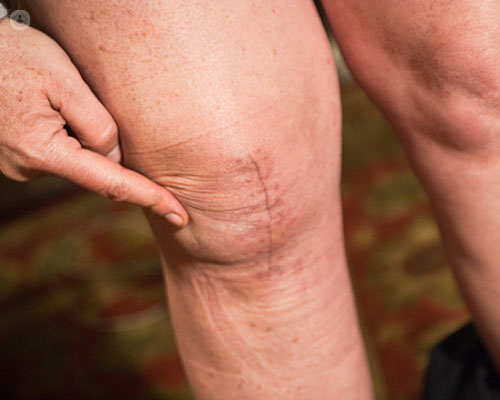

What are scars?
Scars are marks left on the skin after a wound or injury has healed. Visible scars remain on the skin when the deeper layers of your skin has been injured. The vast majority of minor lesions, such as lacerations, cuts, abrasions or burns, will not leave a scar.

How does scarring happen?
After a lesion or injury, the healing process consists of three phases: inflammation phase, proliferative phase and maturation phase.
- The inflammation phase takes place 48-72 hours right after a wound is made. The wound starts closing on its own with a blood clot and the new tissue starts growing.
- In the following three to six weeks, during the proliferative phase, the connective tissue builds up to close the wound.
- During the maturation phase, which can last a few months or a few years in the most severe cases, the deepest layers of the epidermis keep on repairing themselves.
What influences the scar formation process?
Scar healing is a highly individual process which can be influenced by several factors, so you should not take into account only the size and severity of a wound.
For instance, age is really important: the older you are, the longer the wound healing process will be. However, even if you are in the age range of 10 to 30 years, an overproduction of connective tissue can compromise the wound healing process. Furthermore, people with a really pale or darker skin type may have more evident scars, as well as people suffering from a hormone imbalances, such as teenagers and pregnant women. The scar formation process is also influenced by the location of the wound: scars tend to form in parts of the body where the skin is tenser.
Should there be any complications after a wound, such as chronic inflammation (acne), the risk of getting a scar will be much higher.
Types of scars:
Scars can be divided into hypertrophic scars, keloid scars and atrophic scars.
- Keloid and hypertrophic scars are mainly caused by an overproduction of connective tissue, which makes the scar grow outside of the original wound area. Keloid scars are much bigger than the original wound size and tend to be more invasive and persistent than hypertrophic scars. They tend to grow in areas where the skin is tense. People with a genetic predisposition and people with darker skin types can have much more visible scars.
- Atrophic scars or pitted scars are caused by a lack of collagen in the wounded area, creating a sunken recess on the skin. In this case, there is not enough connective tissue to repair the wound. They are particularly common in individuals with acne or chickenpox.
